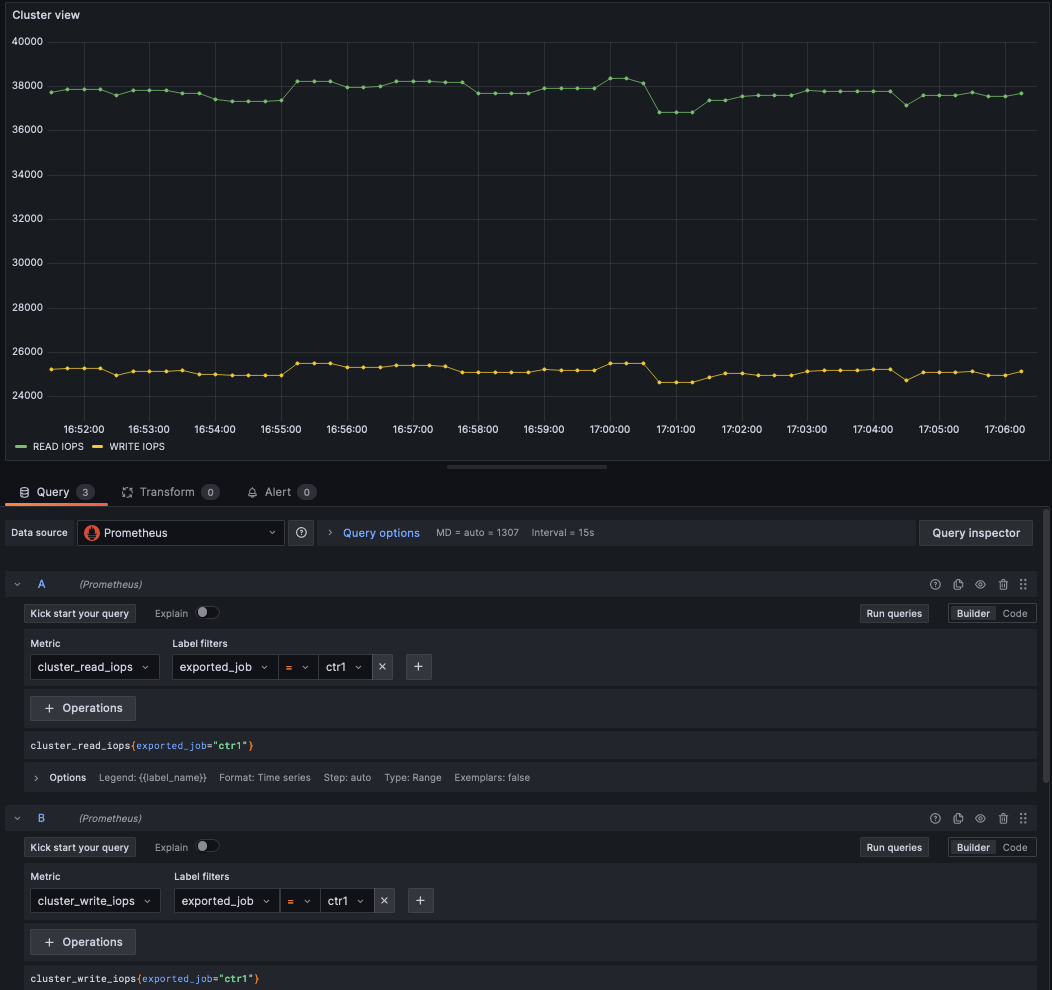 It’s good to detect corrupted data. It’s even better to transparently repair that data and return the correct data to the user. Here we will demonstrate how Nutanix filesystem detects and corrects corruption. Not all systems are made equally in this regard. The topic of corruption detection and remedy was the focus of this excellent Usenix paper Redundancy Does Not Imply Fault Tolerance: Analysis of Distributed Storage Reactions to Single Errors and Corruptions. The authors find that many systems that should in theory be able to recover corrupted data do not in fact do so.
It’s good to detect corrupted data. It’s even better to transparently repair that data and return the correct data to the user. Here we will demonstrate how Nutanix filesystem detects and corrects corruption. Not all systems are made equally in this regard. The topic of corruption detection and remedy was the focus of this excellent Usenix paper Redundancy Does Not Imply Fault Tolerance: Analysis of Distributed Storage Reactions to Single Errors and Corruptions. The authors find that many systems that should in theory be able to recover corrupted data do not in fact do so.
Within the guest Virtual Machine
- Start with a Linux VM and write a specific pattern (0xdeadbeef) to /dev/sdg using fio.
- Check that the expected data is written to the virtual disk and generate a SHA1 checksum of the entire disk.
[root@gary]# od -x /dev/sdg 0000000 adde efbe adde efbe adde efbe adde efbe * 10000000000
[root@gary]# sha1sum /dev/sdg 1c763488abb6e1573aa011fd36e5a3e2a09d24b0 /dev/sdg
- The “od” command shows us that the entire 1GB disk contains the pattern 0xdeadbeef
- The “sha1sum” command creates a checksum (digest) based on the content of the entire disk.
Within the Nutanix CVM
- Connect to the Nutanix CVM
- Locate one of the 4MB egroups that back this virtual disk on the node.
- The virtual disk which belongs to the guest vm (/dev/sdg) is represented in the Nutanix cluster as a series of “Egroups” within the Nutanix filesystem.
- Using some knowledge of the internals I can locate the Egroups which make up the vDisk seen by the guest.
- Double check that this is indeed an Egroup belonging to my vDisk by checking that it contains the expected pattern (0xdeadbeef)
nutanix@NTNX $ od -x 10808705.egroup 0000000 adde efbe adde efbe adde efbe adde efbe * 20000000
- Now simulate a hardware failure and overwrite the egroup with null data
- I do this by reaching underneath the cluster filesystem and deliberately creating corruption, simulating a mis-directed write somewhere in the system.
- If the system does not correct this situation, the user VM will not read 0xdeadbeef as it expects – remember the corruption happened outside of the user VM itself.
nutanix@ $ dd if=/dev/zero of=10846352.egroup bs=1024k count=4
- Use the “dd” command to overwrite the entire 4MB Egroup with /dev/zero (the NULL character).
Back to the client VM
- We can tell if the correct results are returned by checking the checksums match the pre-corrupted values.
[root@gary-tpc tmp]# sha1sum /dev/sdg 1c763488abb6e1573aa011fd36e5a3e2a09d24b0 /dev/sdg. <— Same SHA1 digest as the "pre corruption" state.
- The checksum matches the original value – showing that the data in entire the vdisk is unchanged
- However we did change the vdisk by overwriting one of the. Egroups.
- The system has somehow detected and repaired the corruption which I induced.
- How?
Magic revealed
- Nutanix keeps the checksums at an 8KB granularity as part of our distributed metadata. The system performs the following actions
- Detects that the checksums stored in metadata no longer match the data on disk.
- The stored checksums match were generated against “0xdeadbeef”
- The checksums generated during read be generated against <NULL>
- The checksums will not match and corrective action is taken.
- Nutanix OS
- Finds the corresponding un-corrupted Egroup on another node
- Copies the uncorrupted Egroup to a new egroup on the local node
- Fixes the metadata to point to the new fixed copy
- Removed corrupted egroup
- Returns the uncorrupted data to the user
- Detects that the checksums stored in metadata no longer match the data on disk.
Logs from the Nutanix VM
Here are the logs from Nutanix: notice group 10846352 is the one that we deliberately corrupted earlier
E0315 13:22:37.826596 12085 disk_WAL.cc:1684] Marking extent group 10846352 as corrupt reason: kSliceChecksumMismatch I0315 13:22:37.826755 12083 vdisk_micro_egroup_fixer_op.cc:156] vdisk_id=10808407 operation_id=387450 Starting fixer op on extent group 10846352 reason -1 reconstruction mode 0 (gflag 0) corrupt replica autofix mode (gflag auto) consistency checks 0 start erasure overwrite fixer 0 I0315 13:22:37.829532 12086 vdisk_micro_egroup_fixer_op.cc:801] vdisk_id=10808407 operation_id=387449 Not considering corrupt replica 38 of egroup 10846352
- Data corruption can and does happen (see the above Usenix paper for some of the causes). When designing enterprise storage we have to deal with it
- Nutanix not only detects the corruption, it corrects it.
- In fact Nutanix OS continually scans the data stored on the cluster and makes sure that the stored data matches the expected checksums.
- Doing this avoids latent errors in the system – a major cause of multiple disk failures.

